Object-handling at home – the bee skep
Learn about skeps at the MERL as part of our Bee Happy online event

In this post our curator, Ollie Douglas, introduces us to bee skeps and helps us to explore their history, construction, and design. He describes some simple, hands-on ways for us to think and learn about how bee-keepers used to house their bees (all without having to leave our own homes).
A bee skep is a straw work basket used as a beehive. The Museum has a handful of examples and we’ve explored some of our hive histories in previous posts. Upturned pots and baskets were the first objects used by humans to keep bees. Catching a swarm in a portable object like this meant people could take bees home and produce honey there rather than having to find and harvest it in the wild. There are now many specialist ways to house bees, including hollowed logs, boxes, and stackable hives with removable ‘frames’. The most elaborate designs allow keepers to easily check on bee health, to monitor production, and to collect honey. In some places bee skeps are no longer allowed because their basic design makes it very difficult to check bee health or remove honey without harming the bees.
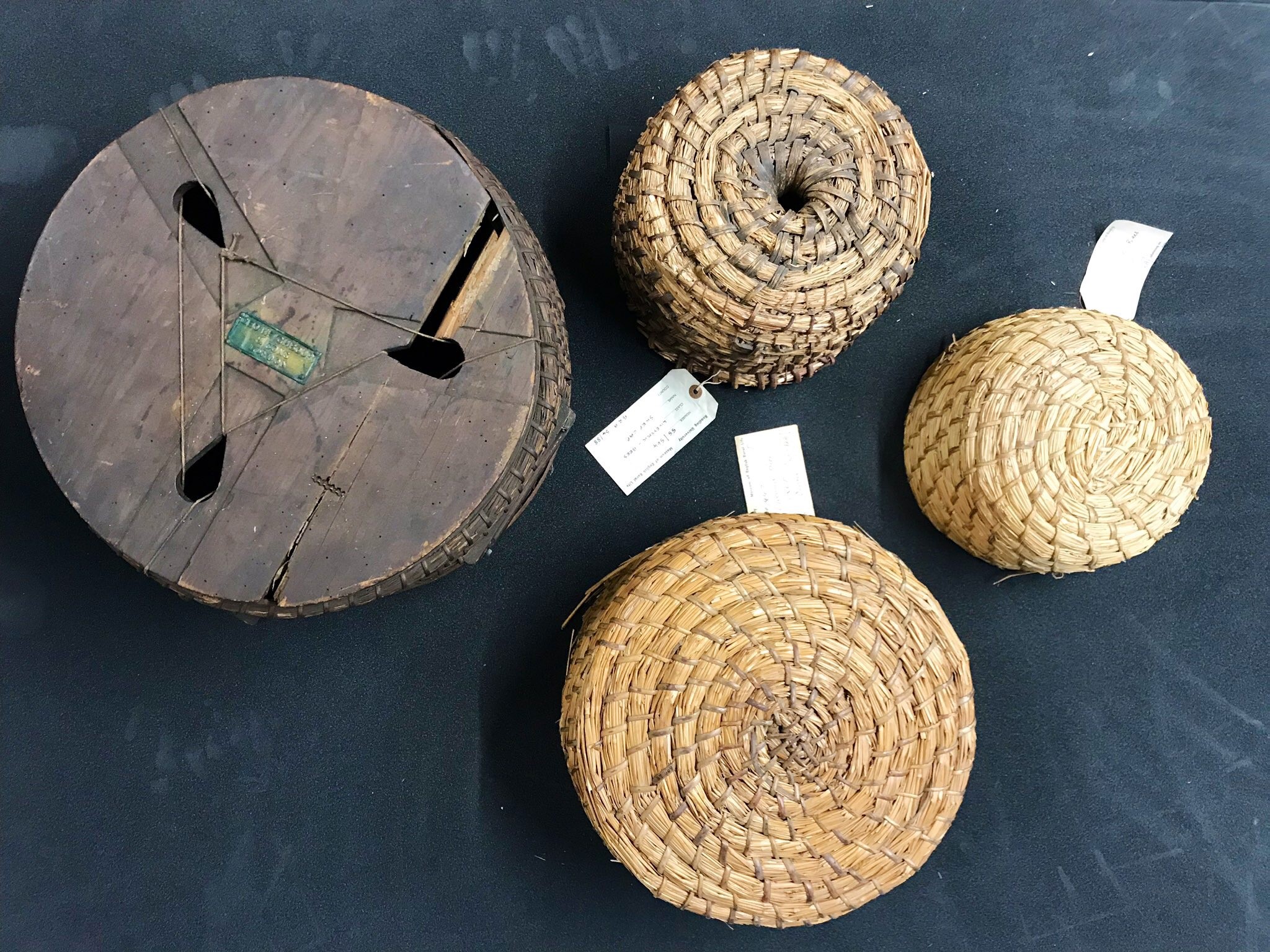
So, even though you aren’t standing in front of an object-handling trolley in The MERL, getting hands-on with a skep from the collection, let’s use things from around your house to have a more detailed think about how they work. Younger readers may want to ask a grown up to help them to find the things they need and support some of these steps. As explained above, there are many types of hive. Straw work skeps are one specific type, and that’s what we are exploring here.
1. To get an idea of what a skep is like you need to find a mixing bowl, or another vessel with curved sides. Now turn it upside down. Skeps are dome-shaped, just like an upside-down bowl. They are made with bunches of straw that have tightly coiled in a spiral, beginning top centre and becoming wider at the base. If you have modelling clay at home you could try making a similar coiled and domed shape. Take a peek under your upside-down bowl. In a real skep, bees build honeycomb on the curved underside.
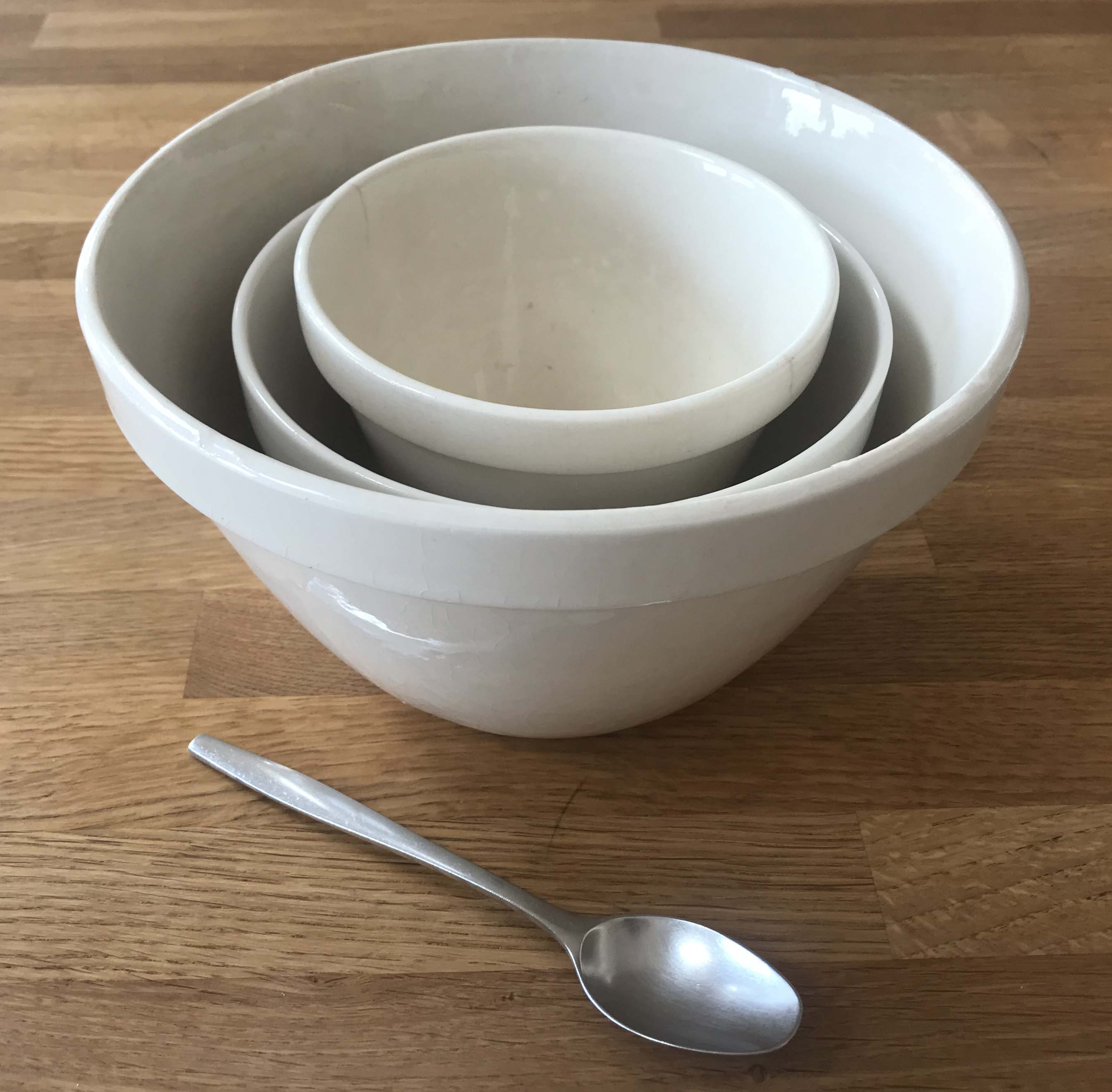
2. As well as single-basket skeps, the Museum also has examples of double skeps. This is like having one small upside down bowl resting on top of a large upside-down bowl. Try to find two domed objects of different sizes and place one on top of the other. Be careful that the object on top doesn’t slip off! Straw work is rough, which means that the upper basket always sits firmly in place. This texture also makes it easy for bees to build honeycomb against the inside surface.
3. But how does the double-layered structure Work? Well, imagine that there’s a small hole in the centre of the lower dome that makes a path into the upper layer. A double skep is like a two-storey home, where the upper dome is the second floor. This design helps with some skep problems. It means that a bee keeper can harvest honey from the upper skep without risking harm to the entire colony.
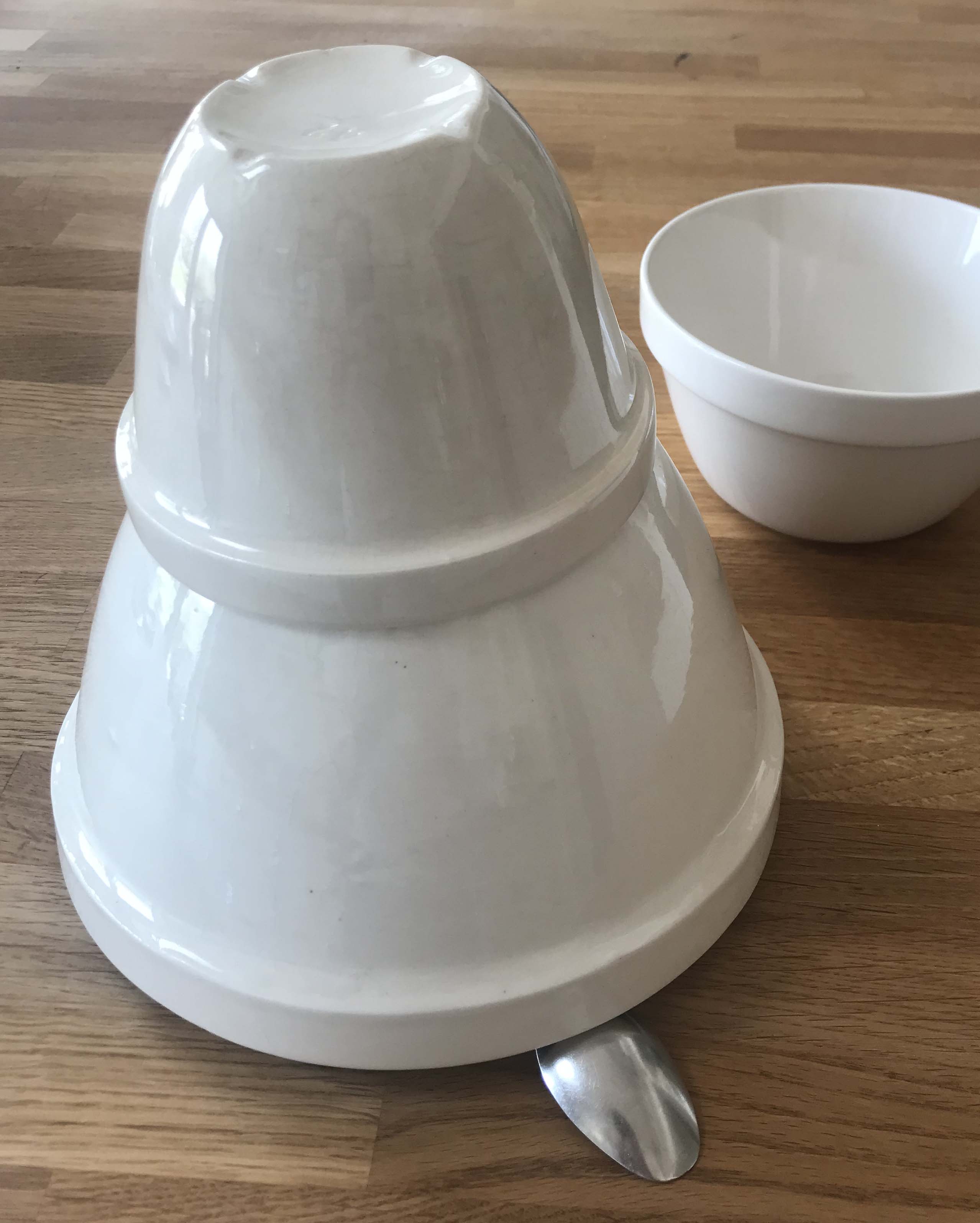
4. Now, look again at your skep. How will the bees get in and out? Some skeps had a little door or built the side wall. Elaborate ones even had a viewing window. Ours has neither but we definitely need to make an entrance. There are two simple options. The first is to place the skep on a base with a carved channel. If you have a chopping or drainage boards with a channel to allow moisture to run off then you could try resting rest your pretend skep on that. Or you can rest it on a small wedge. Traditional skeps sometimes rested on a tile. Ours can balance on a spoon.
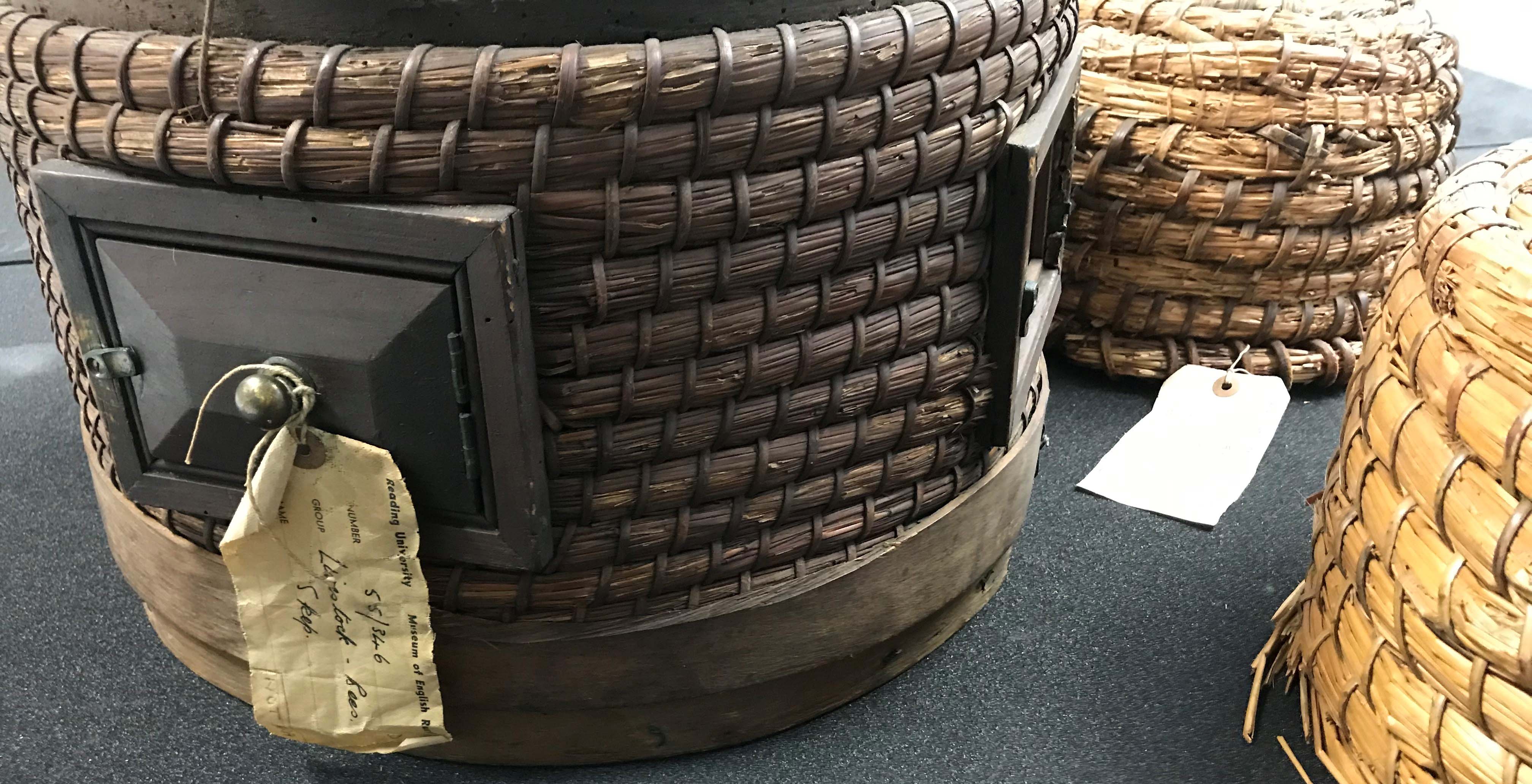
5. Let’s imagine bees going in and out of our skep. Close your eyes and picture them. Make buzzing or humming noises. They would stop near the gap at the base, performing a ‘waggle dance’ to show other bees where to find nectar. Now, look out of your window or, if you have a garden, go outside and look for the closest flowers. Honey tastes different when made from the nectar of different flowers. Don’t eat the flowers. But if you can get close enough smell their fragrance and try to imagine what honey made from their nectar might be like.
6. When the poet Jack Thacker came to examine skeps in the Museum, he was excited to learn that they weren’t just there as examples of traditional craft but some had actually been used. He knew some had been used because there were still tiny fragments of honeycomb stuck inside. These ones also smelt like a mixture of honey, wax, and smoke. If you have honey in your cupboard why not try smelling it? Some The MERL’s skeps have a hint of that same sweetness.
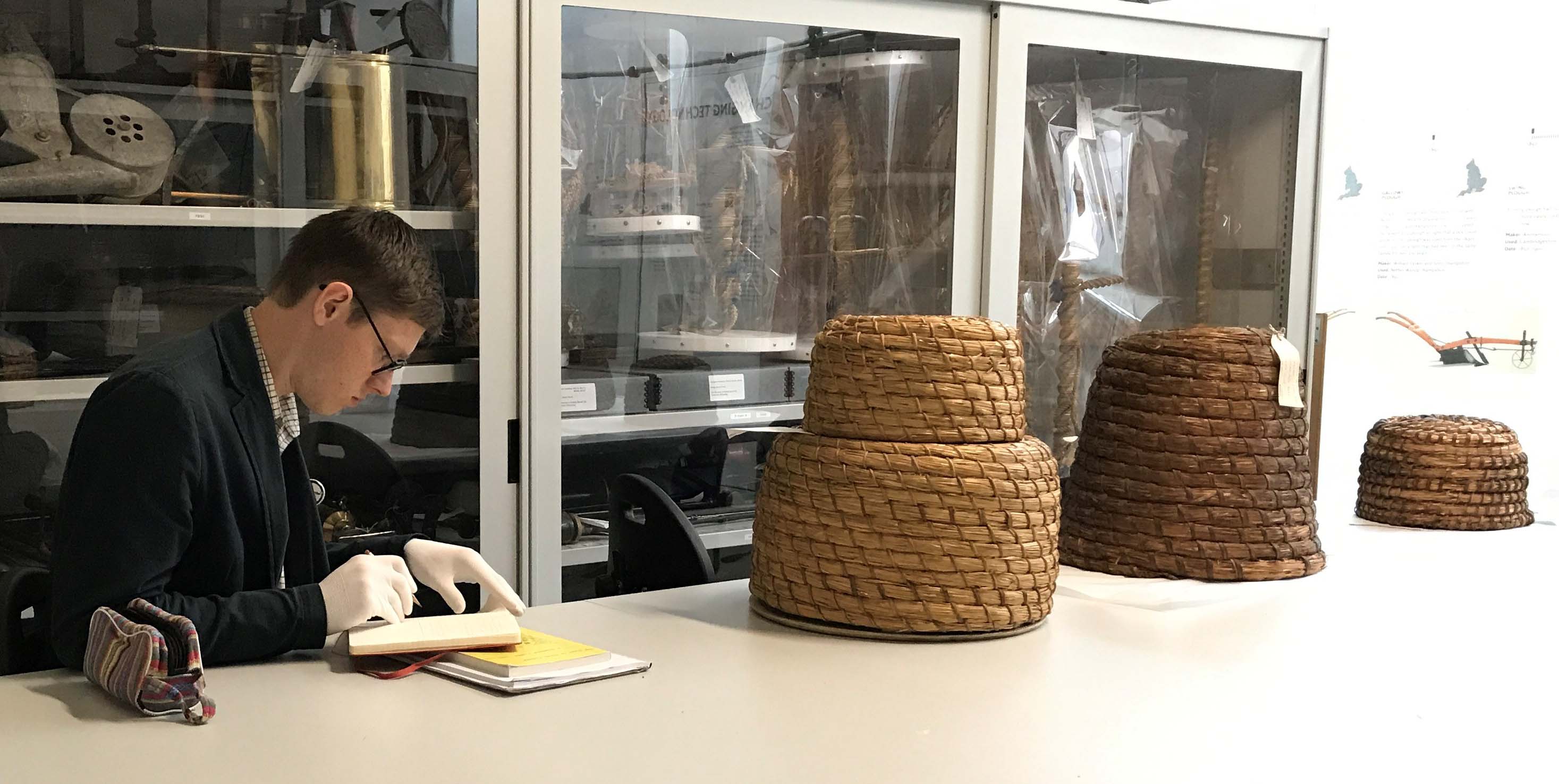
7. Now, see if you can find a candle. It might be a scented candle – that would be fine. If you have a beeswax candle all the better. With help from a grown up, light the candle, leave it until some of the wax melts a bit, and after you blow it out have a think about the mixture of smells that linger in the air. It was a similar mixture of waxy, smoky, and (possibly) floral notes that Jack noticed when he examined the inside The MERL skeps.

It only remains to say that this is great insect-spotting season and if you do have opportunities to get outside them you will find honey bees and many other insects coming out to enjoy the warm spring weather. The Museum has bee-related equipment on display and much more in its stores. In one display case we even have an artificial bee inseminator! Our library has recently acquired an exciting collection of books, all about the fascinating history of bee-keeping, and you can read about them here. So, why not consider this blog post something of a virtual waggle dance, designed to encourage you to come and visit The MERL when we reopen. That way you can use our collections as well as the contents of your own home to continue your learning journey about the wonderful world of bee-keeping.
For now, return to the Facebook Bee Happy event for more activities, and to hear a reading of Jack’s poem entitled Skep.
